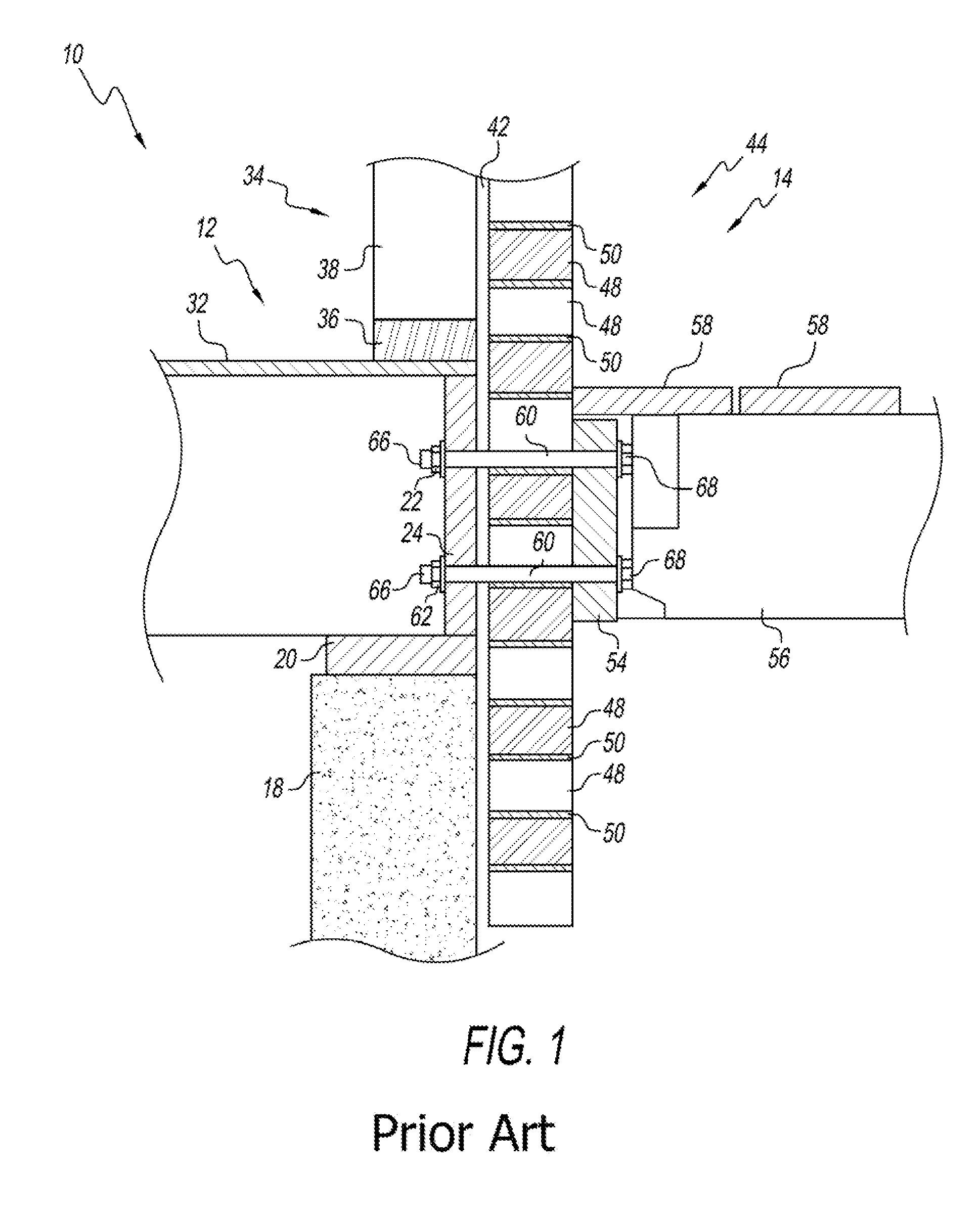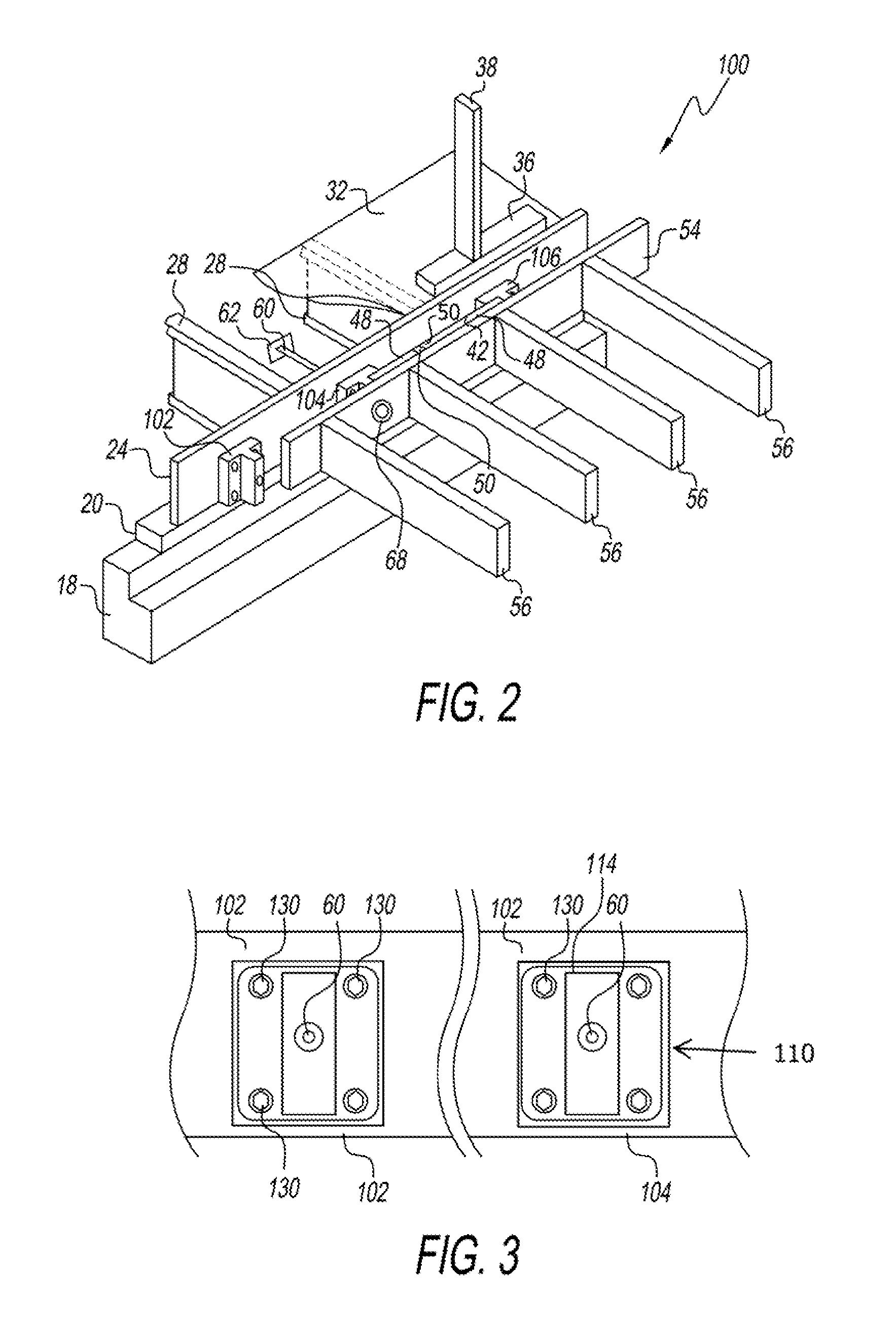Bracket for use in building construction
a technology for building construction and brackets, applied in the direction of building reinforcements, construction, building roofs, etc., can solve the problems of imposing a significant load on the structure of the building, weakening and crumbling of masonry veneer, and rigid aggregate structure, so as to reduce the likelihood, weather resistant, and damage the effect of masonry veneer
- Summary
- Abstract
- Description
- Claims
- Application Information
AI Technical Summary
Benefits of technology
Problems solved by technology
Method used
Image
Examples
Embodiment Construction
[0057]Before the present invention is described, it is helpful to review the prior art, so that one can help distinguish the invention from the prior art. To that end, the reader's attention is directed to FIG. 1, wherein a prior art wall and connector system 10 is shown. The prior art wall and connector system include an interior building member 12, that is comprised primarily of the house frame, and an exterior building member 14 that here is shown as a deck. Although the exterior building member 12 is shown as a deck, it will be appreciated that the invention is applicable with a variety of other exterior building members including, but not limited to porches, pergolas, balconies, signs, window boxes and stairs and other exteriorly disposed building components that exert force on the building through their weight and / or have force exerted on them by the weight of other items, such as people, furniture and the like. As will be described in more detail below, a connector apparatus ...
PUM
 Login to View More
Login to View More Abstract
Description
Claims
Application Information
 Login to View More
Login to View More - R&D
- Intellectual Property
- Life Sciences
- Materials
- Tech Scout
- Unparalleled Data Quality
- Higher Quality Content
- 60% Fewer Hallucinations
Browse by: Latest US Patents, China's latest patents, Technical Efficacy Thesaurus, Application Domain, Technology Topic, Popular Technical Reports.
© 2025 PatSnap. All rights reserved.Legal|Privacy policy|Modern Slavery Act Transparency Statement|Sitemap|About US| Contact US: help@patsnap.com



